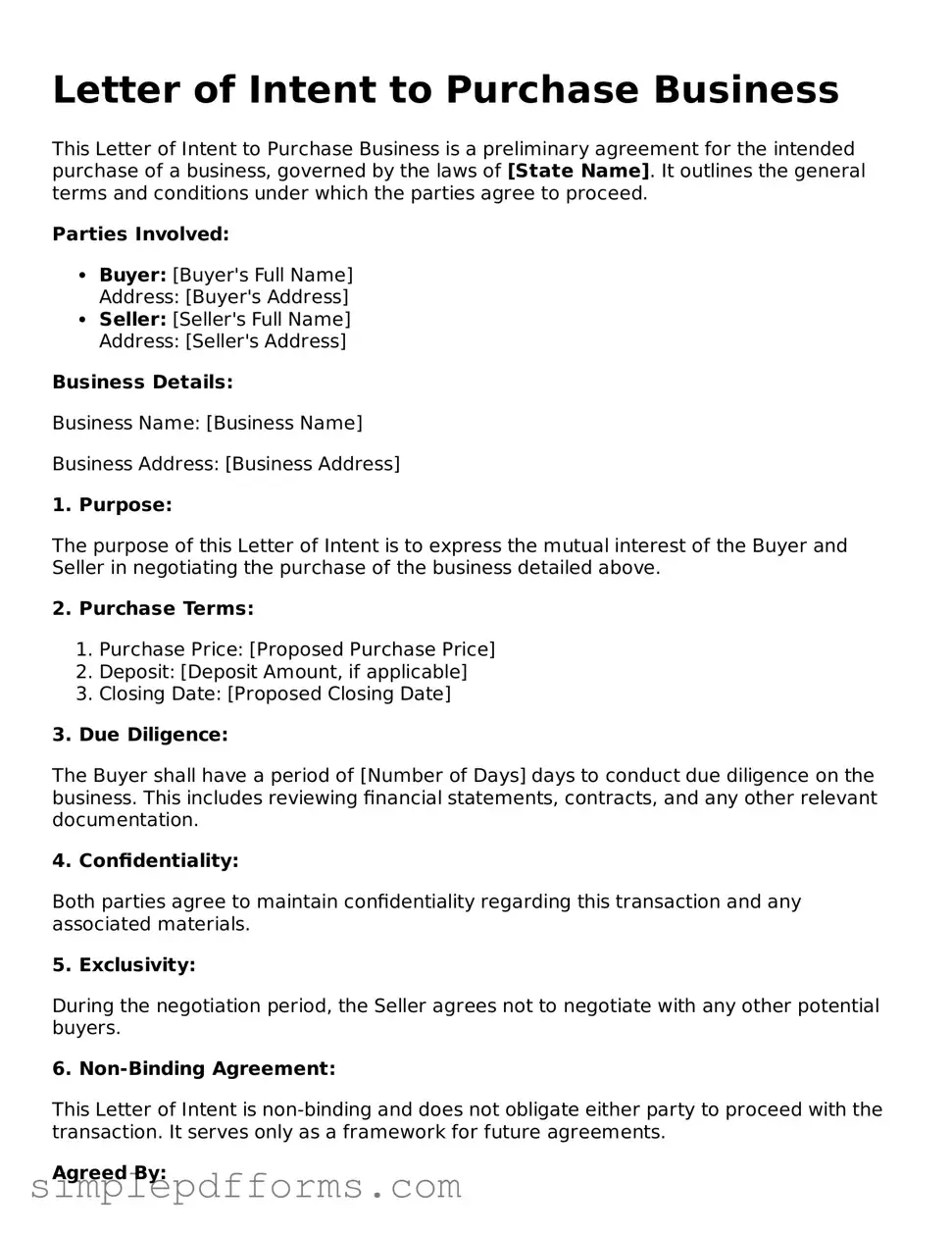Letter of Intent to Purchase Business
This Letter of Intent to Purchase Business is a preliminary agreement for the intended purchase of a business, governed by the laws of [State Name]. It outlines the general terms and conditions under which the parties agree to proceed.
Parties Involved:
- Buyer: [Buyer's Full Name]
Address: [Buyer's Address]
- Seller: [Seller's Full Name]
Address: [Seller's Address]
Business Details:
Business Name: [Business Name]
Business Address: [Business Address]
1. Purpose:
The purpose of this Letter of Intent is to express the mutual interest of the Buyer and Seller in negotiating the purchase of the business detailed above.
2. Purchase Terms:
- Purchase Price: [Proposed Purchase Price]
- Deposit: [Deposit Amount, if applicable]
- Closing Date: [Proposed Closing Date]
3. Due Diligence:
The Buyer shall have a period of [Number of Days] days to conduct due diligence on the business. This includes reviewing financial statements, contracts, and any other relevant documentation.
4. Confidentiality:
Both parties agree to maintain confidentiality regarding this transaction and any associated materials.
5. Exclusivity:
During the negotiation period, the Seller agrees not to negotiate with any other potential buyers.
6. Non-Binding Agreement:
This Letter of Intent is non-binding and does not obligate either party to proceed with the transaction. It serves only as a framework for future agreements.
Agreed By:
Buyer Signature: ____________________ Date: ________________
Seller Signature: ____________________ Date: ________________
This document was prepared as a general guide and is not intended as legal advice.
